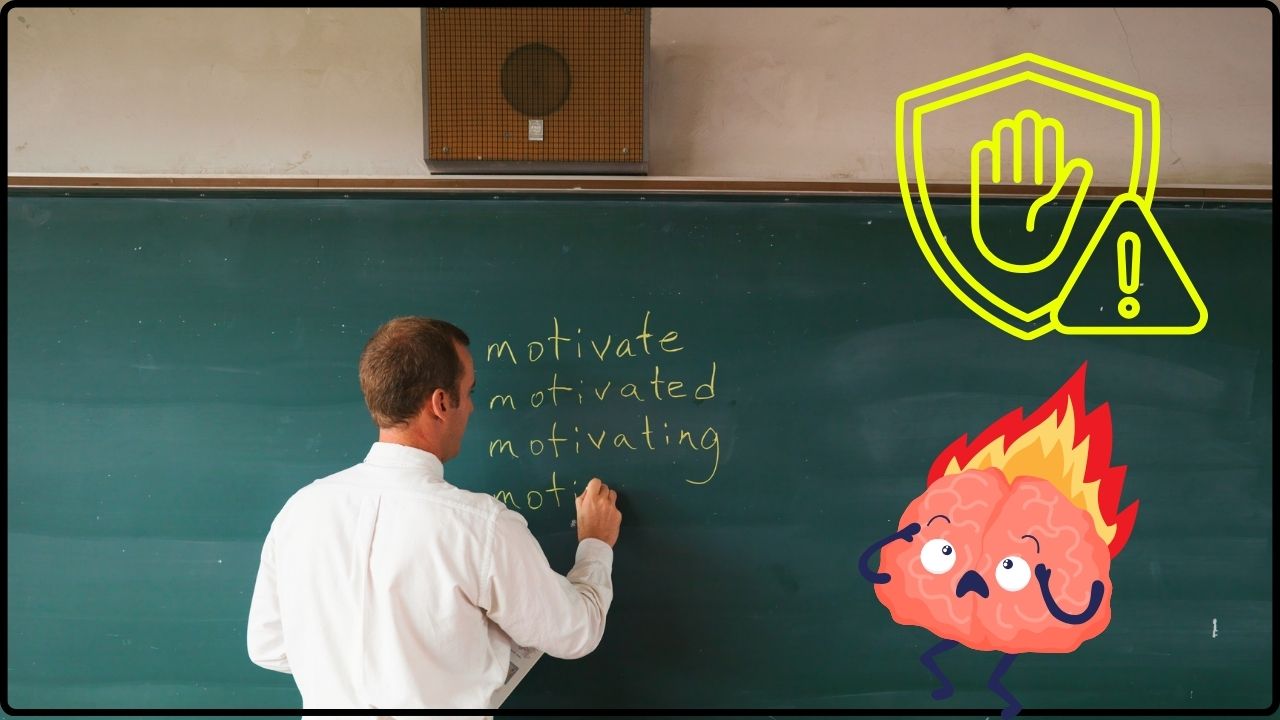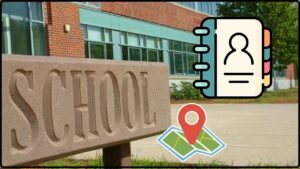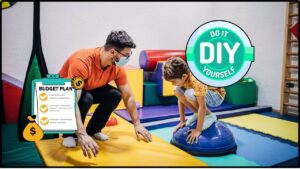The “Green Classroom” Model: When you think about school, you probably picture desks, chalkboards, and rows of kids sitting still. But there’s a new wave taking over education in the U.S.—the Green Classroom model. This innovative approach steps outside the usual four walls, bringing classrooms into green spaces filled with plants, trees, and fresh air. It’s all about harnessing the power of the outdoors to help kids learn better, feel calmer, and regulate their senses. Why is the Green Classroom model becoming a buzzword in education? Because it works—for every kid, not just some. Outdoor learning mixes nature’s calming effects with sensory-rich experiences. Kids engage with the world around them by actively touching, moving, seeing, listening, and smelling, which helps their brains grow, their bodies get stronger, and their behaviors settle down. Schools across the country—from urban public schools to rural charter programs—are adopting this model, reporting improvements in attention span, social skills, and academic outcomes.
Table of Contents
The “Green Classroom” Model
The Green Classroom model is reshaping education by taking advantage of nature’s sensory power to help kids learn better, feel calmer, and grow stronger. From boosting test scores to helping kids with sensory needs find calm and focus, this model is a win for students, teachers, and communities. Whether you’re an educator, parent, or policymaker, supporting outdoor learning can make schools more dynamic, inclusive, and effective. It’s time to get outside, embrace natural learning, and watch children blossom.

| Feature | Details |
|---|---|
| Outdoor Activity Time | At least 30 minutes for every 3 hours of classroom time is recommended |
| Space Requirement | Minimum 75 sq. ft. outdoor space per child |
| Academic Results | Science test scores improved by 27%; focus improved by 30+% |
| Special Needs Benefits | Reduced meltdowns; improved self-regulation and social interaction for children with ASD/ADHD |
| Notable Schools Using Model | Clearview Elementary (LEED Gold certified), Monroe Elementary (Iowa), MLK Jr. Middle School (CA) |
What Is The “Green Classroom” Model?
The Green Classroom model uses nature as a partner in education. Imagine lessons happening beneath open skies during math class as students measure garden plants, or during reading where kids write stories inspired by birdsong or sunshine. Unlike traditional classrooms where students passively absorb facts, the Green Classroom encourages active learning using all the senses.
Located in gardens, woodlands, or schoolyards, these classrooms feature natural materials and spaces for movement, exploration, and quiet reflection. It’s not just about throwing kids outside—it’s a thoughtfully designed approach where lessons link directly to curricula covering science, math, language arts, and art.
This immersive experience supercharges development. Studies show that students engaged in outdoor schooling programs demonstrate gains in attention, greater creativity, and stronger physical health. The benefits extend beyond academics, too—students develop emotional stamina, resilience, and a love for the environment.
Case in point:
Clearview Elementary in Hanover, Pennsylvania, stands out with its LEED Gold certified facilities emphasizing daylight and outdoor learning spaces. Teachers report that students are not only more engaged but also less likely to act out compared to conventional indoor classrooms.
Sensory Regulation: What and Why It Matters
Sensory regulation means managing how our brain processes sensory information—like sights, sounds, smells, texture, and movement. Kids especially young ones, those with ADHD, autism, or sensory processing disorder often find this tricky. Overwhelm or under-stimulation can cause anxiety, inability to focus, irritability, or withdrawal.
The Green Classroom offers a sensory-friendly solution by combining natural stimuli with calm environments:
- Natural sounds (birds, wind, water) provide soothing white noise that eases stress.
- Physical textures (soil, leaves, bark) engage the sense of touch in gentle, grounding ways.
- Movement opportunities (running, climbing, balancing) help regulate the body’s energy.
- Fresh air and sunlight promote alertness and mood stabilization.
A growing body of science backs these benefits. For example, a 2024 study revealed children showed significantly lower heart rates and cortisol levels (stress hormone) when participating in outdoor learning compared to indoor classes. Schools report that sensory regulation through nature reduces the number of disciplinary incidents and increases positive social behaviors.
How The “Green Classroom” Model Supports Academic Growth and Life Skills?
Nature isn’t a distraction—it’s an amplifier for learning. The direct engagement kids have in a Green Classroom helps cement concepts more deeply than mere lectures or worksheets. Here’s how:
Enhanced Focus and Attention
Natural environments are less visually cluttered and more “softly fascinating,” allowing children’s brains to rest and reset, making sustained focus easier when lessons begin.
Hands-On Science and Math
Kids measure plant growth, track weather changes, and collect real data for projects, bridging abstract concepts and concrete experiences. Math lessons include counting seeds, measuring rainfall, or categorizing leaves by shape.
Emotional and Social Development
Collaborative outdoor projects promote teamwork, communication, and empathy. Kids also learn patience and perseverance as they tend gardens or observe wildlife over time.
Physical Health and Motor Skills
Movement in diverse terrains builds strength, coordination, and balance. Regular outdoor activity combats sedentary lifestyles and childhood obesity.

Getting Started With The “Green Classroom” Model: Detailed Steps
Ready to ditch the four walls? Here’s a detailed roadmap for schools, teachers, or parents:
1. Design Your Outdoor Space
- Allocate a space that gives 75 square feet per student minimum.
- Include diverse zones: garden beds, sensory trails with varying textures, water play, shaded quiet corners, and open areas for group activities.
- Prioritize safe and accessible paths and seating.
2. Create a Schedule
- Plan for at least 30 minutes outdoors for every 3 hours of schooling; earlier grades might spend even more time.
- Adapt with seasonal clothing and weather plans—rain ponchos, sun hats, or indoor backup sensory bins.
3. Educator Training and Collaboration
- Engage teachers with professional development focusing on outdoor lesson plans, sensory integration techniques, and behavior management.
- Foster teamwork between classroom teachers, special educators, and environmental specialists.
- Leverage resources from programs like Project Learning Tree or the Children & Nature Network.
4. Curriculum Integration
- Align outdoor activities with standards like Common Core or Next Generation Science Standards (NGSS).
- Math activities include measurement and data collection outdoors.
- Language arts lessons can involve nature journaling or storytelling.
- Science explorations may cover ecology, weather, animals, and plants.
5. Sensory Engagement Plans
Utilize sensory menus guiding students through:
- Textures (mud, leaves, water)
- Sounds (bird calls, wind chimes)
- Visuals (cloud shapes, insect spotting)
- Smells (herbs, flowers)
- Movements (balance beams, obstacle courses)
6. Engage Parents and Community
- Host outdoor open houses to showcase the programs and build support.
- Invite local experts, gardeners, or naturalists to participate.
- Seek community or grant funding for improvements and supplies.
Real-Life Success Stories From Across America
- Monroe Elementary, Iowa: Transformed its neglected courtyard into a vibrant “living classroom” with tall grasses, native plants, and wetlands. The school reported a 40% drop in behavioral referrals after a year and a notable rise in student curiosity and science grades.
- Martin Luther King Jr. Middle School, California: Their program, inspired by the “Edible Schoolyard,” embeds gardening in every lesson. Students grow vegetables while studying biology and nutrition, leading to improvements in health and cooperation.
- Legacy Elementary, Alabama: Students mentor younger peers through outdoor projects like animal tracking and weather monitoring, nurturing leadership and social skills alongside academics.

What Teachers and Parents Are Saying?
Teachers consistently report more engaged, happier students since adopting the Green Classroom. They note fewer classroom disruptions and deeper curiosity. Parents see improvements at home: better sleep, stronger social skills, and greater outdoor play.
“Our outdoor lessons changed everything. Kids who never raised their hands started leading projects. And they loved the freedom to explore safely.” — Ms. Clarke, 3rd Grade Teacher, Phoenix
“Since joining the nature program, my son is more confident, talks more, and is less anxious. It’s like he’s found his happy place.” — Parent, Green school participant, Seattle, WA
Challenges and Practical Solutions
Implementing the Green Classroom isn’t without hurdles:
- Time constraints: Start small with short daily outdoor breaks and grow gradually.
- Weather obstacles: Maintain indoor sensory activities for backup; use weather-appropriate gear.
- Limited outdoor space: Use container gardening, local parks, or community greenhouses.
- Teacher confidence: Use professional networks and mentorship programs for support.
Managing ADHD in the Classroom: 5 Proven Strategies for Serbian Schools
Inclusive Physical Education: Games and Adaptations for Mixed-Ability Groups
















